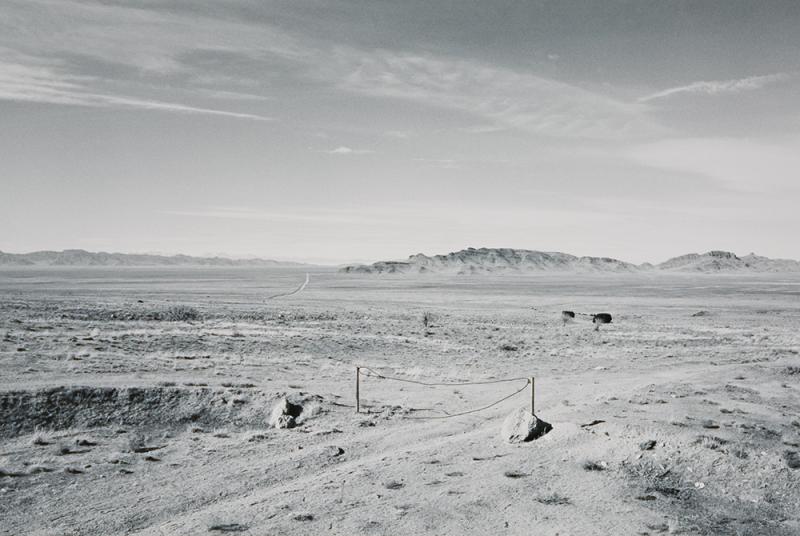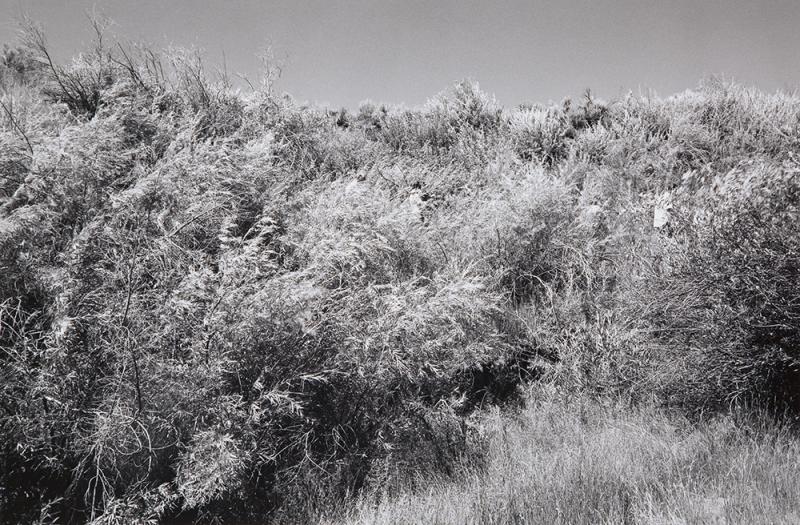Drex BROOKS
American, born 1952
-
Drex Brooks received a master’s in fine arts from the Rhode Island School of Design in 1980 before moving to Utah to teach at Weber State University. When living in the Intermountain West, he became interested in the untold histories of conflict between indigenous peoples and white settlers in the region. His Sweet Medicine series documents massacre sites, highlighting the legacies of exploitation and violence towards Native Americans that have been overlooked and understudied in American history. Read an interview with the photographer about the series in The Morning News.
-
Simpson Springs is a historic station on the Pony Express route between Sacramento and Salt Lake City. It was most active from April 3, 1860 until October 26, 1861, when overland horses were the primary method for delivering mail from Missouri to California.
-
In 1863, US Army soldiers killed most of the Goshute men, women, and children living nearby at Coyote Springs. The soldiers believed that they were protecting the gold and silver trade in the region that was helping to finance the Civil War – one of many misguided justifications for the violent colonization of indigenous peoples in the West. In response, the Pahvant Ute leader, Peahnamp, attacked the mail station and killed the men who perpetrated this massacre.
-
Learn more about the indigenous lands you call home.
-
In September 1857, a group of settlers in the Baker–Fancher wagon train was making its way from Arkansas to California. 120 members of the group were killed by a Mormon militia, which was deep in conflict with the United States government over the future of the Utah Territory.
-
Many of the perpetrators disguised themselves as Native Americans to give the impression that the massacre was an attack by local indigenous peoples. Though a few Southern Paiutes were recruited to aid in the attack, it was largely motivated by Mormon leaders' hysteria over the increase of non-Mormon settlers in the Utah Territory. Learn more about this historical tragedy with The Alarmist podcast.
-
Why do you think the photographer chose to name this series Sweet Medicine? What might he hope his photographs will achieve? How could you use your own voice or art-form to draw attention to hidden histories, call out injustices, or promote change?


